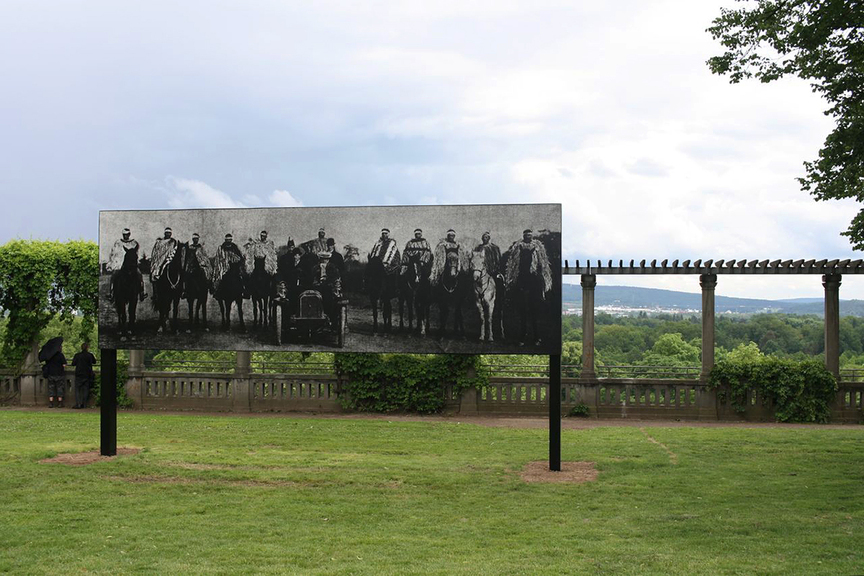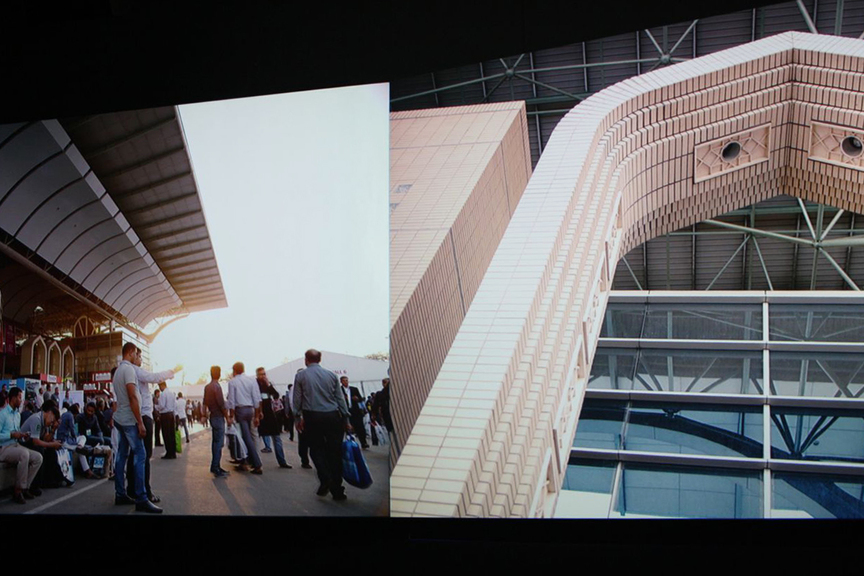
R
E
V N
E
X
T
The more one sees at Documenta 14 in Kassel, the more it becomes apparent that the event is fundamentally about offering brutal correctives to the Europe-centric sense of self, proving that the murderous, racialist legacy of the National Socialism agenda remains unresolved and that its resurgence is fueling the neofascism of today’s Europe. The former point is made most comprehensively and forcefully in Maria Eichhorn’s Rose Valland Institute (2017), which focuses on unreturned artworks and books expropriated from Jewish families and whose return the German state has been negligent or unwilling to facilitate. That the Nationalist Socialist ethos of racial supremacy still underlies today’s anti-immigrant attitudes and crimes is exemplified by Forensic Architecture’s project, which shows that elements of the German government were present at the murder of Halit Yozgat, a young man of Turkish origin, for which explanations have never been given. In its international perspective, Documenta 14 suggests that the horrors of colonialism too were enabled and neglected due to the same sense of racial supremacy, as in the room of newspapers, photos and paintings by Zainul Abedin, Chittaprosad and Sunil Janah about the Bengal famine of 1943–44. With regards to the art presented, beyond showing the long Enlightenment history of romanticism that idolizes “classical beauty,” allowing for the de-humanization of the imperfect, there is also the sense that aesthetics itself cannot be trusted.
In the Documenta 14 universe, the only thing that counts in the visual realm is evidence, which is all “art” can really be: carriers of value (or as stolen treasure); records of witnessing; or act of protest—that is, evidence of history. The one exception allowed for contemporary artists is “creative” forms of tedious moralizing, such as the act of erecting ersatz monuments (Olu Oguibe) or the displaying of posters (Hans Haacke) that instruct the public to welcome strangers.
The ethnographic lens, though “critical,” was a troubling one that curators—and indeed many European artists—frequently utilized at Documenta, often without avoiding its pitfalls. The curators used almost exclusively indigenous artists to make points about land expropriation under colonialism. The Mongolian artist Nomin Bold was chosen to speak about rapid urbanization—but why Mongolia and not anywhere in Europe? Does smog not hang over Paris too? Meanwhile, Susan Hiller, in the video Lost and Found (2016), collaged the voice recordings of indigenous Maori people speaking their own languages, and Peter Friedl asked Austria-based immigrants from dozens of countries to recite parts of Kafka’s A Report to an Academy (1917) in their native tongues. (It has to be noted that the artist seems to have ignored the alarming implication of having immigrants read out a story narrated by an ape who has become human.) That the perspective of the non-Europeans in Documenta 14 was realized only through structural charity and the supposed moral benevolence of the artist and curators—repeating dynamics that have played out throughout past decades—perpetuates the racialized, classist social hierarchies and attitudes that Documenta 14 rhetorically opposes in its richly self-congratulatory internal dialogue within the “daybook,” a map booklet which contains almost no actual information about the works on view, complementing the paucity of wall texts in the exhibition itself.
Of course, some of the art resisted curatorial attempts to flatten the aesthetics out of it and instrumentalize it as knowledge. Roee Rosen’s video The Dust Channel (2016) was the only humorous artwork in all of Documenta 14. It is scathing about Israeli society’s own racist underpinnings. Gauri Gill and Rajesh Vangad collaborated beautifully on photographs adorned with the latter’s drawings. Ganesh Haloi’s paintings have their own unique aesthetic, which wasn’t over-inscribed by the curatorial premise. Bouchra Khalili’s 60-minute video The Tempest Society (2017) allows migrants in Greece to speak about their own actual experiences in powerful ways, while Naeem Mohaiemen’s film Two Meetings and a Funeral (2017) looks at how the promises of Third-Worldism were railroaded by political Islamism during the brief heyday of the Non-Aligned Movement.
The problems and struggles of Europe are real and very evident in a small regional city like Kassel, which is middle-class and increasingly multi-ethnic. But in Documenta 14’s process of “learning from Kassel” (and Athens), the act of learning about history or representing others almost always comes from the perspective or viewpoint of a researching curator or artist, the visitor or interloper, the Europeanized subject looking outward at the not-yet-European. It is troubling how the art world remains so pleased with itself for discovering information, history and social circumstances, and how it then transforms that information into its own social capital and re-presents it as if it were new. The disappointment of Documenta 14 is that, despite its enormity as a project, it remains fundamentally about the smallness of Europe’s mindset and its history, and suppresses any conversation about the conflicts Europeans have caused outside of this region. Self-laceration, after all, is just history repeating itself.
HG Masters is editor at large of ArtAsiaPacific.
Documenta 14’s program in Kassel runs from June 10 to September 17, 2017.To read more of ArtAsiaPacific’s articles, visit our Digital Library.




